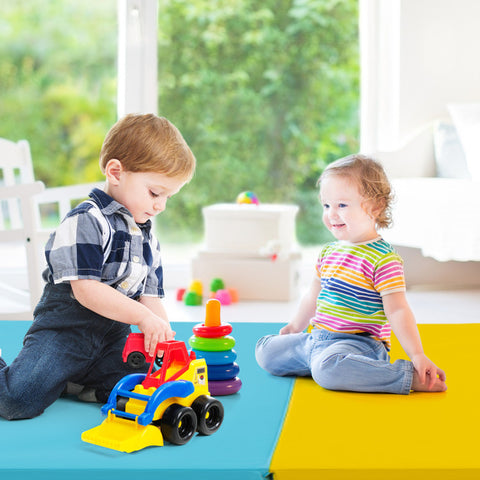News
How to Properly Set Up a Gymnastics Mat for Maximum Safety and Performance
Setting up a gymnastics mat correctly is essential for both safety and performance. Whether you're training at home or in a gym, a poorly positioned mat can lead to slipping, misalignment, and injury risks. Proper setup ensures that gymnasts have a stable, cushioned surface to practice tumbling, flips, and other skills with confidence. In this guide, we’ll walk through the best practices for setting up a gymnastics mat to enhance safety, improve technique, and maximize durability.

Choosing the Right Surface for Your Gymnastics Mat
Before placing your mat, it’s important to assess the surface where it will be used. The right flooring can significantly impact stability, shock absorption, and grip.
1. Flat and Even Ground
Always place the gymnastics mat on a flat, level surface to prevent uneven landings. Training on an unstable floor can lead to ankle sprains or misalignment in movement execution.
2. Avoid Slippery Floors
Tile, hardwood, or laminate flooring can cause mats to slide or shift during use. If using a gymnastics mat on these surfaces, consider adding a non-slip underlayer or placing the mat against a secure surface like a wall.
3. Carpeted Floors for Added Cushioning
A carpeted floor provides extra grip and shock absorption, making it a great choice for placing a gymnastics mat, especially for beginners.
Positioning the Gymnastics Mat Correctly
To ensure maximum safety, it’s crucial to position your mat properly.
1. Align Multiple Mats Seamlessly
If using multiple gymnastics mats, ensure they are perfectly aligned with no gaps in between. Any uneven space can create a tripping hazard. Using Velcro connectors or built-in interlocking edges can help keep mats in place.
2. Secure the Mat in Place
If the mat tends to move during exercises, use anti-slip tape or a grip liner underneath to prevent shifting. For folding mats, always secure the folded sections properly before use.
3. Adjust Based on Activity Type
- For tumbling and high-impact exercises, use a thicker, high-density foam mat for better shock absorption.
- For balance beam training, ensure the mat is centered and provides adequate coverage around the beam.
- For stretching or warm-ups, a thinner mat is sufficient but should still be placed on a secure, non-slip surface.
Ensuring Safety While Using Gymnastics Mats
Proper setup alone isn’t enough—gymnasts must also follow safety precautions while training on the mat.
1. Check for Any Tears or Damage
Before each session, inspect the mat for any tears, cracks, or compressed foam areas. A damaged mat can reduce impact absorption and increase injury risk.
2. Keep the Mat Clean and Dry
Dirt and sweat can make the mat slippery. Regularly wipe it down with a mild cleaning solution to maintain a hygienic and non-slip surface.
3. Avoid Overlapping or Uneven Mats
Never stack mats unless they are designed for layering. Uneven surfaces can lead to ankle twists or unstable landings.
4. Keep a Clear Training Space
Ensure the area around the mat is free from obstacles, furniture, or loose equipment that could cause injury if a gymnast falls off the mat.
Tips for Enhancing Performance on a Gymnastics Mat
A properly set-up gymnastics mat not only improves safety but also enhances training performance.
- Warm up before practice to prevent stiffness and injuries.
- Use chalk or grip socks for better traction, especially if your mat has a smooth surface.
- Rotate the mat regularly to prevent uneven wear and prolong its lifespan.
- Pair with additional safety equipment such as crash mats for advanced tumbling skills.
Conclusion
Setting up a gymnastics mat properly is essential for safety, stability, and effective training. Whether you're a beginner or an advanced gymnast, ensuring the mat is placed on a flat, non-slip surface, properly aligned, and secured in place can prevent injuries and help improve performance. Regular maintenance, checking for damage, and keeping the mat clean will also ensure long-lasting use. With the right setup, a gymnastics mat becomes a reliable training tool for developing strength, flexibility, and confidence in every move.

